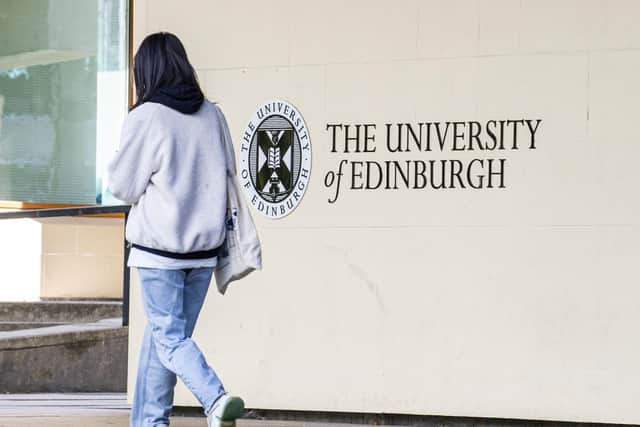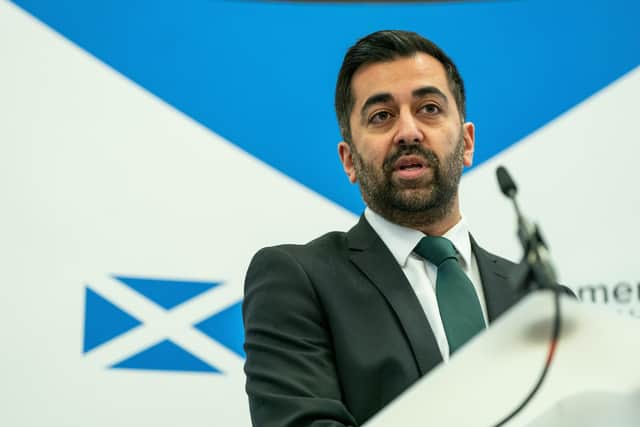Universities Scotland: How does the SNP's free tuition policy work and can it survive the spending squeeze?
The SNP’s policy of free tuition for Scottish university students has come under scrutiny in recent days as huge budget cuts bite across the public sector, including in higher education.
Ministers have been forced to end funding for additional places for Scots, created during the pandemic, and there are fears of further reductions to come.
Advertisement
Hide AdAdvertisement
Hide AdEven the SNP’s education secretary Jenny Gilruth admitted last week the government’s tuition fees policy was creating “challenges” for universities.


As questions grow over the future of flagship initiative, The Scotsman has taken a look at the policy, its unintended consequences, and what might happen next.
When did students have to pay for university tuition?
Higher education was effectively free in the UK between 1962 and the 1990s. Amid funding pressures, an inquiry recommended in 1997 that students start contributing to the cost of their education once they were in work. In 1998, Tony Blair’s Labour Government introduced tuition fees across the UK, to be a maximum of £1,000 per academic year.
What happened after the Scottish Parliament was created?


Following devolution in 1999, Labour struck a power-sharing deal with the Liberal Democrats, who were opposed to charging for tuition.
A commission recommended replacing tuition fees in Scotland with a graduate endowment scheme, which would involve a one-off contribution from graduates, with loans available to assist.
The scheme was introduced in 2001/02, with the endowment payment set at £2,000, payable the April after graduation.
Why did the SNP want to change the system?


Ahead of its 2007 election victory, the SNP manifesto promised to scrap the graduate endowment.
Within weeks of taking power, then education secretary Fiona Hyslop told the Scottish Parliament that current and future students would not have to pay it. She said it was a “very complicated and inefficient” system, which was effectively a “back-end” tuition fee that was adding to student debt.
How does the funding model introduced by the SNP work?
Advertisement
Hide AdAdvertisement
Hide AdFunding now comes mainly via two streams. The first is the block teaching grant issued each year by the Scottish Government to the Scottish Funding Council (SFC), which then distributes it to universities.
The second source, also from the Government, is a tuition fee payment the Student Awards Agency Scotland (SAAS) pays directly to universities for each eligible funded student.
Because places for Scottish students are directly funded by the Government, it means they have to be capped so the cost of the policy does not spiral.
What is the impact of the cap on Scottish students?
It means some are turned away from courses or institutions, despite meeting the entry requirements.
Last year, a row erupted after The Scotsman revealed every Scottish student accepted to Edinburgh University to study law had come from a more deprived background or an underperforming state school, under “widening access” targets, with more affluent Scots being shut out.
Meanwhile, there is no cap on the number of students that can be recruited from the rest of the UK, to pay up to £9,250 per year in fees, or international students, who pay even more. There is no option for Scottish residents to pay a tuition fee to access courses.
What has the policy done to Scottish higher education?
Scottish students graduate with far less debt than their English counterparts. For Scots, the average last year was £15,430, compared to £44,940 in England.
However, a recent report by the Institute for Fiscal Studies (IFS) said Scottish universities now receive direct support of £7,610 for each Scottish student, which is around 19 per cent less in real terms than in 2013/14, in part because of below inflation grant rises. This is around £2,020 lower than the resources available for an English university undergraduate.
Advertisement
Hide AdAdvertisement
Hide AdMeanwhile, universities in Scotland have become increasingly reliant on tuition fees from non-Scottish students.
Tuition fees surpassed SFC grants as the largest source of income for universities for the first time in 2017/18, representing 32 per cent of the total in that year, half of which came from students from outside the EU.
This source of income has continued to increase “sharply” since then, going from £1.144 billion in 2021/22 to £1.289bn in 2022/23, and is forecast to hit £1.617bn in 2024/25, a increase of 41 per cent since 2021/22.
Why is free university tuition under the spotlight now?
Public finances in Scotland are facing a historic squeeze. The entire education and skills budget for the coming year is almost £4.87bn, of which nearly £3.39bn is committed to higher education, student support and the SFC, which funds colleges as well as universities.
The teaching grant for universities alone is more than £760m, but this is down by almost 6 per cent on the previous year.
Part of the funding shortfall will be filled by removing support for an extra 1,200 places for Scottish students, created during the pandemic, but universities say this will not plug the gap. Meanwhile, the reduction in grant comes at a time when stricter UK immigration rules are going to make it harder to recruit fee-paying students.
Will the SNP Government abandon the policy?
Unlikely. Humza Yousaf will know there would be significant political risks associated with ditching it.
The Liberal Democrats faced huge reputational damage when they U-turned on their opposition to free tuition in 2010. To suddenly ask thousands of Scottish students and their families to take on massive additional debts amid an ongoing cost-of-living crisis would trigger a ferocious backlash.
Advertisement
Hide AdAdvertisement
Hide AdHowever, Ms Gilruth has complained about the imbalance in the education budget, and has also admitted free tuition is causing “challenges”. Some have suggested the government could consider changes short of completely abandoning free tuition, such as asking more affluent Scots to pay fees.
Mr Yousaf quickly dismissed the idea last year. However, as the IFS warned, preserving the current model will be “increasingly difficult”.
Comments
Want to join the conversation? Please or to comment on this article.
